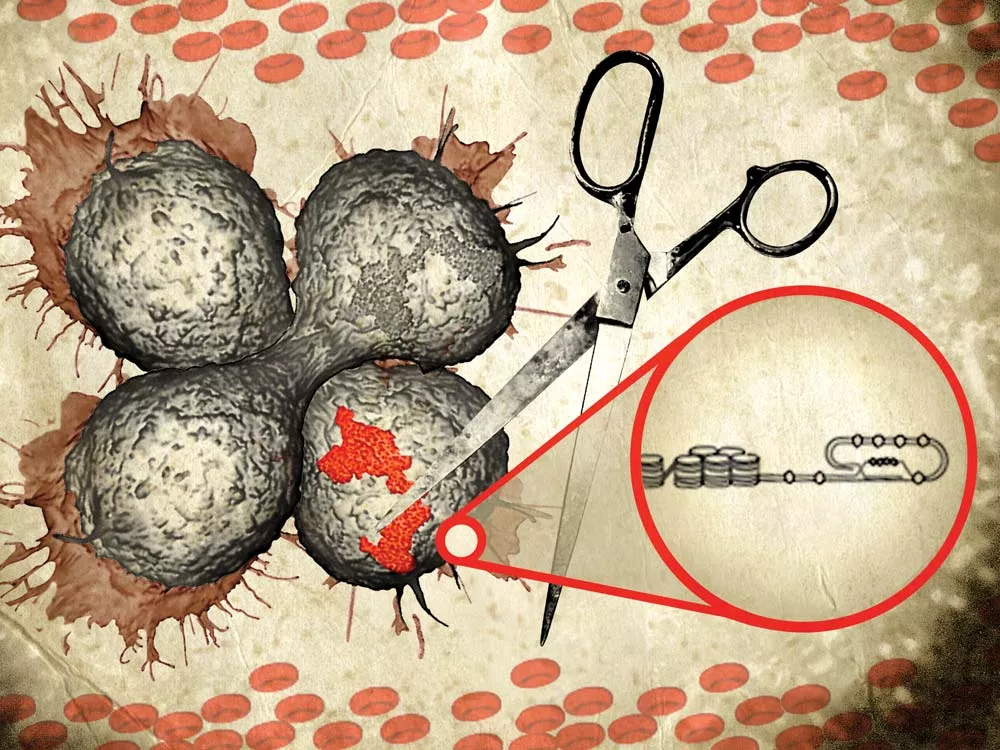Picture that star- and moon-covered tent at the fairgrounds, where the old, snaggly-toothed woman promises that by looking at the line in the middle of your palm she can tell you tell how long you’ll live.
Turns out, if she could just look closer, she would be onto something.
Zoom to the cellular level, then zoom even closer. That’s a chromosome. Zoom closer. That’s DNA.
But zoom even closer, to the very end of that DNA strand. That’s what scientists call the telomere, a repetitive DNA sequence that protects the rest of the strand. One science blogger compares them to the little caps on your shoelaces, preventing them from fraying.
Scientists are learning that these caps play a crucial role in people’s life spans. They’ve found that those who live longer tend to have longer telomere strands and that the strands, when they combine with certain proteins, are also what extend the lives of cancer cells.
The future of health, in other words, could depend on how well scientists understand this tiny tip of a tiny strand in a tiny cell.
In her lab at the Riverpoint Campus, molecular bioscientist Weihang Chai is surrounded by large expensive scientific machines, test tubes and a refrigeration unit clearly marked with signs forbidding the storage of sack lunches. For three years, aided by two doctoral scientists and two graduate students, Chai has been untangling the structure of telomeres, unlocking their curious behavior, finding clues that, years from now, may save lives — or at least prolong them.
One thing she knows is that telomeres give an inherent limit to the number of times a cell can divide.
“The DNA [strand] gets shorter and shorter each time your cell divides,” Chai says. “Then it gets critically short, and [it] signals cells to stop growing.” As cell division slows, we’re less able to respond to injury, less able to build and maintain muscle. In short, we start to grow old.
But while some labs work on figuring out how to increase life span, lately Chai’s been focusing on another angle.
Scientists suspect that a certain type of protein, called telomerase, essentially lengthens one of the two strands of this essential fuse (other proteins lengthen the other strand), counteracting the shortening that normally happens when cells divide. In 2009, this discovery merited a Nobel Prize in medicine.
Embryonic stem cells and white blood cells use telomerase. That’s good — it allows these vital cells to divide indefinitely. But cancer cells also use telomerase. That’s bad — it essentially makes cancer cells immortal, giving them the power to divide themselves forever. When the cancer becomes malignant, tumors pop up, and they become almost impossible to kill without grave measures.
“Eight-five percent of the cancers [use] telomerase,” Chai says. “Understanding this whole process, maybe we can find something new — a new way — to shut off telomerase,” Chai says. There is already one telomerase inhibitor in clinical trial, though it may produce the same visible side effects as chemotherapy does, since stem cells, responsible for hair growth, also use telomerase. Kill those cells, lose your hair.
Meanwhile, Chai’s team is targeting the other proteins lengthening the second telomere strand in cancer cells. They’ve dug deep into the structure of the telomere, specifically the single strand of DNA at the very end that bends back like a paperclip. When the cell divides, that strand undergoes dramatic changes — it lengthens, then shortens — and Chai’s team’s discovered certain proteins responsible.
“We know the structure is important,” Chai says. “But we don’t know if there is a way we can completely destroy the structure in the cancer cells.”
They’ve already realized that if they stop the production of certain proteins key to this structure, they can — and here’s where science beats science fiction — target it by using RNA interference, a fancy process in which small, specially coded RNA strands kill the larger RNA strands, destroying production of the protein.
Plenty of other cancer-killing techniques exist, but Chai hopes her research will lead to a technique to weaken the cancer cells, making them more sensitive to drugs already used.
“We do have a lot of ideas we want to test. We don’t have the resources to test them,” Chai says. “Funding is key now, with the current economy, with the budget cuts everywhere.”
And as any reader of Popular Science knows, the promised innovations of tomorrow are often many, many tomorrows away.
“From basic research to translational research to clinical research is a long way,” Chai says. “So be patient.”


